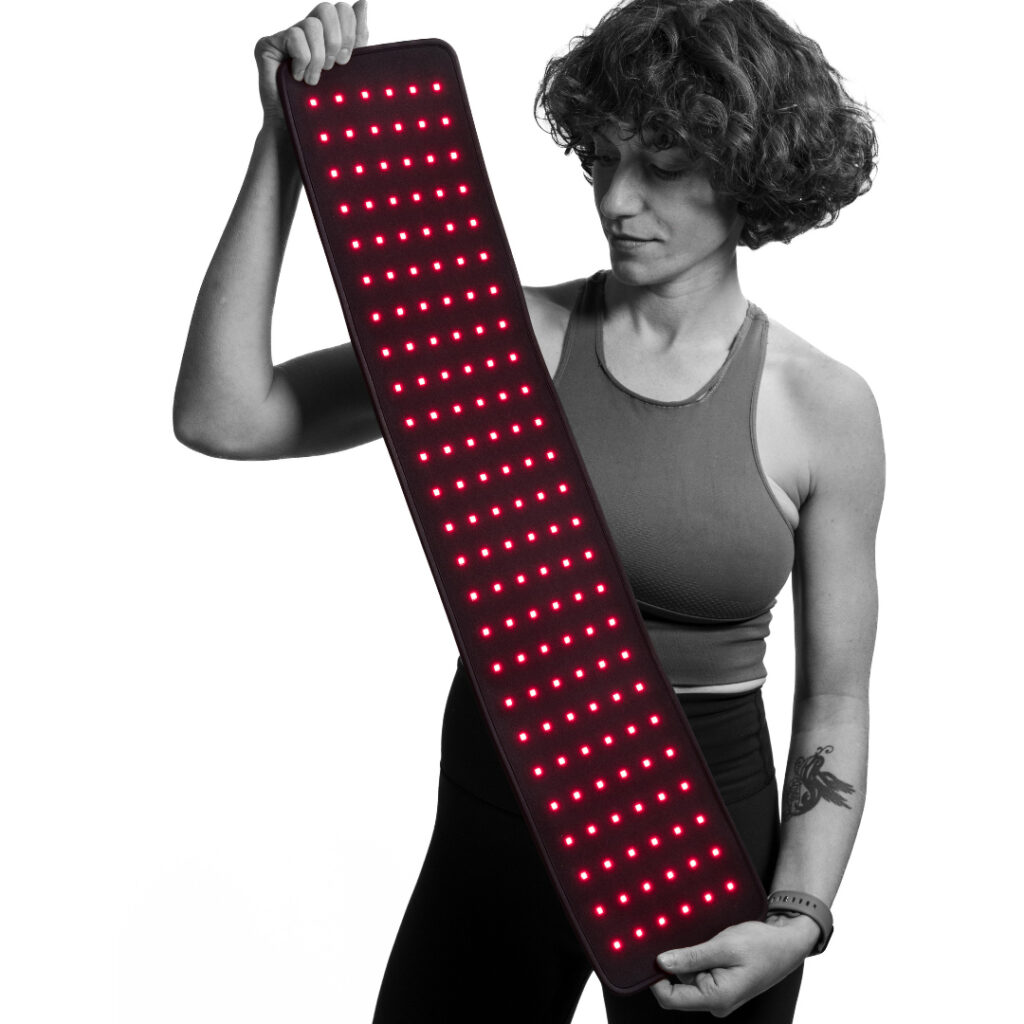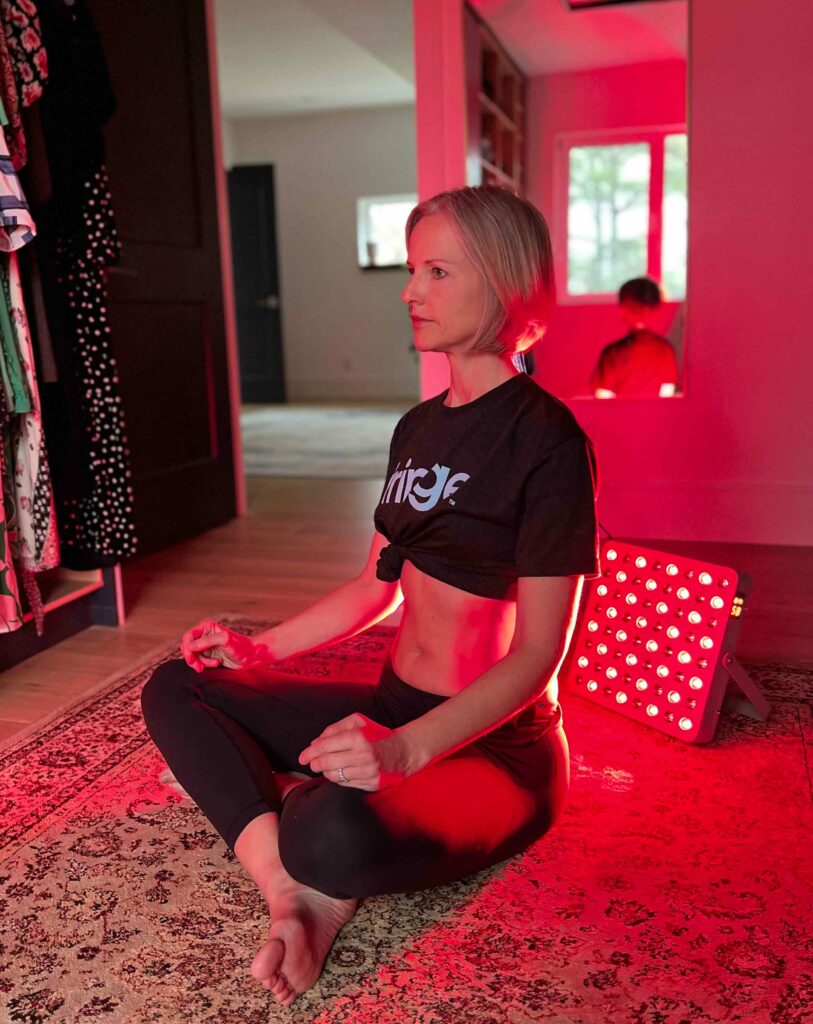Red Light Therapy for Multiple Sclerosis: Benefits, Research, and How to Use It
What Is Multiple Sclerosis? Causes and Symptoms
Multiple Sclerosis (MS) is a chronic, often progressive neurological disease that affects more than 2.8 million people worldwide. It arises when the immune system mistakenly attacks the protective myelin sheath that surrounds nerves in the brain, spinal cord, and optic nerves. This process leads to disrupted nerve signaling and various neurological symptoms such as fatigue, weakness, pain, and cognitive impairment.
MS is unique in that it involves both the nervous and immune systems. On the nervous system side, demyelination and neurodegeneration are core features. On the immune system side, MS is marked by dysregulation that causes the immune system to lose tolerance and attack “self”, which represents a breakdown in immune tolerance mechanisms that normally prevent autoimmunity.
Pathologically, MS is characterized by a combination of mitochondrial dysfunction, neuroinflammation, oxidative stress, nerve damage, and immune dysregulation. Mitochondrial dysfunction contributes to energy deficits in neurons, making them more vulnerable to damage. Neuroinflammation, driven by overactive microglia and T cells, further amplifies tissue injury. Oxidative stress, which is an imbalance between reactive oxygen species (ROS) and antioxidants, damages lipids, proteins, and DNA. Together, these processes drive demyelination, axonal injury, and disease progression.
Red Light Therapy (RLT) (also called photobiomodulation) is the therapeutic application of red and near-infrared light to stimulate beneficial biological processes. Increasingly, RLT is being explored as a supportive therapy for MS, thanks to its demonstrated effects on mitochondrial function, inflammation, oxidative stress, nerve regeneration, and immune modulation.
How Red Light Therapy Works in the Body
RLT influences biology through two main routes: (1) light entering through the eyes to affect circadian, mood, and hormonal regulation, and (2) light applied to the skin or other tissues, which penetrates and affects cells directly. While the eye route is relevant to circadian and mood effects, the skin/tissue route is central to the therapeutic benefits relevant to MS.
- Mitochondrial Function: Red and near-infrared light are absorbed by cytochrome c oxidase in mitochondria, increasing ATP production and enhancing mitochondrial health. This improves cellular energy availability, which is particularly important in MS, where energy failure contributes to axonal degeneration and immune dysfunction.
- Neuroinflammation: RLT downregulates pro-inflammatory cytokines (e.g., TNF-α, IL-1β) and suppresses microglial and astrocyte activation. It also increases anti-inflammatory cytokines like IL-10. These effects help reduce the chronic inflammation that characterizes MS lesions.
- Oxidative Stress: Through mitochondrial ROS signaling and activation of antioxidant pathways, RLT reduces oxidative stress. This protects against the oxidative damage that drives demyelination and neuronal injury.
- Nerve Regeneration: RLT promotes neurotrophic factors (e.g., BDNF, NGF), remyelination, and axonal repair. These effects support healing in damaged areas of the nervous system.
Immune Modulation: RLT can shift T cell profiles, which enhances immune tolerance and reduces systemic inflammation. It may also modulate circulating immune cells and even stimulate the thymus gland.

Research on Red Light Therapy for MS
Research on RLT and MS has spanned both animal and human models, and although it is limited in scope, the results so far have been very encouraging.
For example, studies using the experimental autoimmune encephalomyelitis (EAE) mouse models of MS have shown that red and near-infrared light:
- Slow disease progression
- Reduce neuroinflammation and oxidative stress
- Preserve myelin and axonal structure
- Improve motor coordination and sensorimotor function
Human studies similarly have consistently shown beneficial effects:
- In two studies by Silva and colleagues (2020, 2022), participants with relapsing-remitting MS received red light therapy twice per week for 12 weeks. The light was applied to the sublingual area under the tongue, or radial artery, using an LED device. The results showed a significant increase in IL-10, an important anti-inflammatory cytokine, suggesting improved immune balance without any adverse effects.
- In a study by Rouhani et al. (2024), even a single session of RLT applied to the lower leg was enough to enhance muscle strength and speed up force recovery. This points to a potential role for RLT in addressing MS-related muscle fatigue.
- Kubsik et al. (2016) delivered 21 sessions of laser therapy to the spinal nerve roots, three times per week. Participants showed measurable improvement in disability scores (EDSS) and gained greater independence in daily activities, as measured by the Barthel Index.
- Finally, Seada et al. (2013) treated the facial region in MS patients suffering from trigeminal neuralgia. After 24 sessions (3x/week), participants experienced reduced facial pain and better jaw function.
These studies vary in location of light application (mouth, leg, spine, face), device type (laser vs LED), and outcomes, but collectively suggest that RLT supports neurological function, reduces symptoms, and enhances quality of life in MS.

How to Choose the Best Red Light Therapy Device
Choosing the right red light therapy device is key to getting meaningful results, especially when using it to support something as complex as multiple sclerosis. Here’s what to look for:
- Red & Near-Infrared LEDs: Look for a device that offers both red (620–750nm) and near-infrared (750–1100nm) wavelengths. Red light penetrates superficial tissues and is great for skin and surface nerves, while near-infrared light penetrates deeper, making it ideal for reaching the spinal cord, brain, and larger joints. A mix of both offers the most versatility for targeting MS-related symptoms throughout the body.
- Low-to-Moderate Intensity: More is not always better. Aim for a device that delivers between 20–40 mW/cm² of irradiance, like natural sunlight on your skin. This range has been shown to trigger biological responses without overstimulating tissues. In MS, this is especially important, as excessive intensity could worsen oxidative stress or trigger adverse effects in sensitive cells. This is also important since heat tolerance can be an issue for MS patients, and sun-like intensity products are less warm. You can also look for products that allow for intensity to be reduced to give you more control over heat exposure.
- Wearable and Comfortable Design: Consistency matters more than power, and comfort plays a big role in whether you’ll stick with a protocol. Soft, flexible wraps or pads conform to your body and allow you to move or relax during use. Rigid panels may be less practical for frequent use, especially for people who have balance issues or fatigue.
- Quality and Affordability: While some premium systems can cost thousands, many excellent home-use devices fall in the $200–$500 range. Avoid ultra-cheap devices with unclear specifications or poor build quality. Look for brands that disclose their wavelengths, irradiance levels, safety certifications, and offer good customer support.
Investing in the right device makes it easier to build a sustainable, evidence-informed routine that targets the nervous and immune systems safely and effectively.
Evidence-Based Red Light Therapy Protocols for MS
At this time, there’s no universal or clinically endorsed protocol for using red light therapy in multiple sclerosis. However, when we look at the growing body of research—including both animal studies and small-scale human trials—clear themes emerge. Specifically, it makes sense to focus on three main targets: the nervous system, the immune system, and any areas of localized symptoms such as pain, spasticity, or muscle weakness.
Based on that, a well-rounded strategy could look like this:
Target areas:
- Nervous system: Apply light to the spine or head to support brain and spinal cord health
- Immune system: Shine light over the sternum (home of the thymus gland) to influence immune regulation
- Symptom-specific areas: Use light on painful, tight, or weakened areas to reduce symptoms and support function
Example weekly rhythm:
- Day 1: 10 minutes on the spine + 10 minutes on the head /forehead
- Day 2: 10 minutes over the thymus (center of chest) + 10 minutes on a symptomatic area
- Repeat this two-day pattern two to three times a week
A few practical guidelines:
- Stick to one session per body area per day; it’s ok to do RLT on multiple body parts in a single day, but limit to one treatment per area in a 24 hr period
- Use moderate light intensity, similar to what’s found in sunlight (20–40 mW/cm²)
- Keep each session to 20 minutes or less per region
This structure draws on published MS studies using 1–3 sessions per week, and it’s designed to be both manageable and biologically targeted.

Conclusion
While research into red light therapy for multiple sclerosis is still emerging, the results so far are encouraging. Both animal and human studies suggest that red and near-infrared light may help reduce inflammation, protect neurons, support immune balance, and improve quality of life. By targeting the nervous system, immune system, and areas of symptom burden, red light therapy offers a science-informed, non-invasive tool that could complement conventional MS care. As always, individuals should consult with their healthcare provider before beginning any new therapeutic approach.
about the author
Dr. Genevieve Newton, DC, PhD spent close to 20 years as a researcher and educator in the field of nutritional sciences before joining Fringe as its Scientific Director. Gen’s job is to “bring the science” that supports Fringe’s products and education. She is passionate about all things Fringe, and is a deep believer in healing body, mind and spirit using the gifts of the natural world.
The contents in this blog; such as text, content, graphics are intended for educational purposes only. The Content is not intended to substitute for professional medical advice, diagnosis, or treatment. Always seek the advice of your healthcare provider.

References
Silva, M. B. R., et al. (2020). Effects of photobiomodulation on interleukin-10 and nitrites in individuals with relapsing-remitting multiple sclerosis: A randomized clinical trial. PLoS ONE, 15(11), e0242373. https://pubmed.ncbi.nlm.nih.gov/33237920/
Silva, M. B. R., et al. (2022). Effect of photobiomodulation on fatigue in individuals with relapsing-remitting multiple sclerosis: A pilot study. Lasers in Medical Science, 37, 2391–2399. https://pubmed.ncbi.nlm.nih.gov/35575600/
Rouhani, M., et al. (2024). Effects of photobiomodulation therapy on muscle function in individuals with multiple sclerosis. Multiple Sclerosis and Related Disorders, 79, 105198. https://pubmed.ncbi.nlm.nih.gov/38206680/
Kubsik, A., et al. (2016). Application of laser radiation and magnetostimulation in therapy of patients with multiple sclerosis. NeuroRehabilitation, 39(4), 597–602. https://pubmed.ncbi.nlm.nih.gov/27834398/
Seada, M. A. A., et al. (2013). Comparison between trans-cranial electromagnetic stimulation and low-level laser on modulation of trigeminal neuralgia. Journal of Physical Therapy Science, 25(8), 985–988. https://pubmed.ncbi.nlm.nih.gov/24259932/
Duarte, D., et al. (2018). Photobiomodulation and experimental autoimmune encephalomyelitis: a systematic review. Journal of Photochemistry and Photobiology B: Biology, 189, 19–26. https://pubmed.ncbi.nlm.nih.gov/29353706/
Gonzalez-Lima, F., et al. (2024). Transcranial laser stimulation: a neuroenhancement tool with applications to cognitive and emotional disorders. Frontiers in Neurology, 15, 1193881. https://pubmed.ncbi.nlm.nih.gov/38819339/